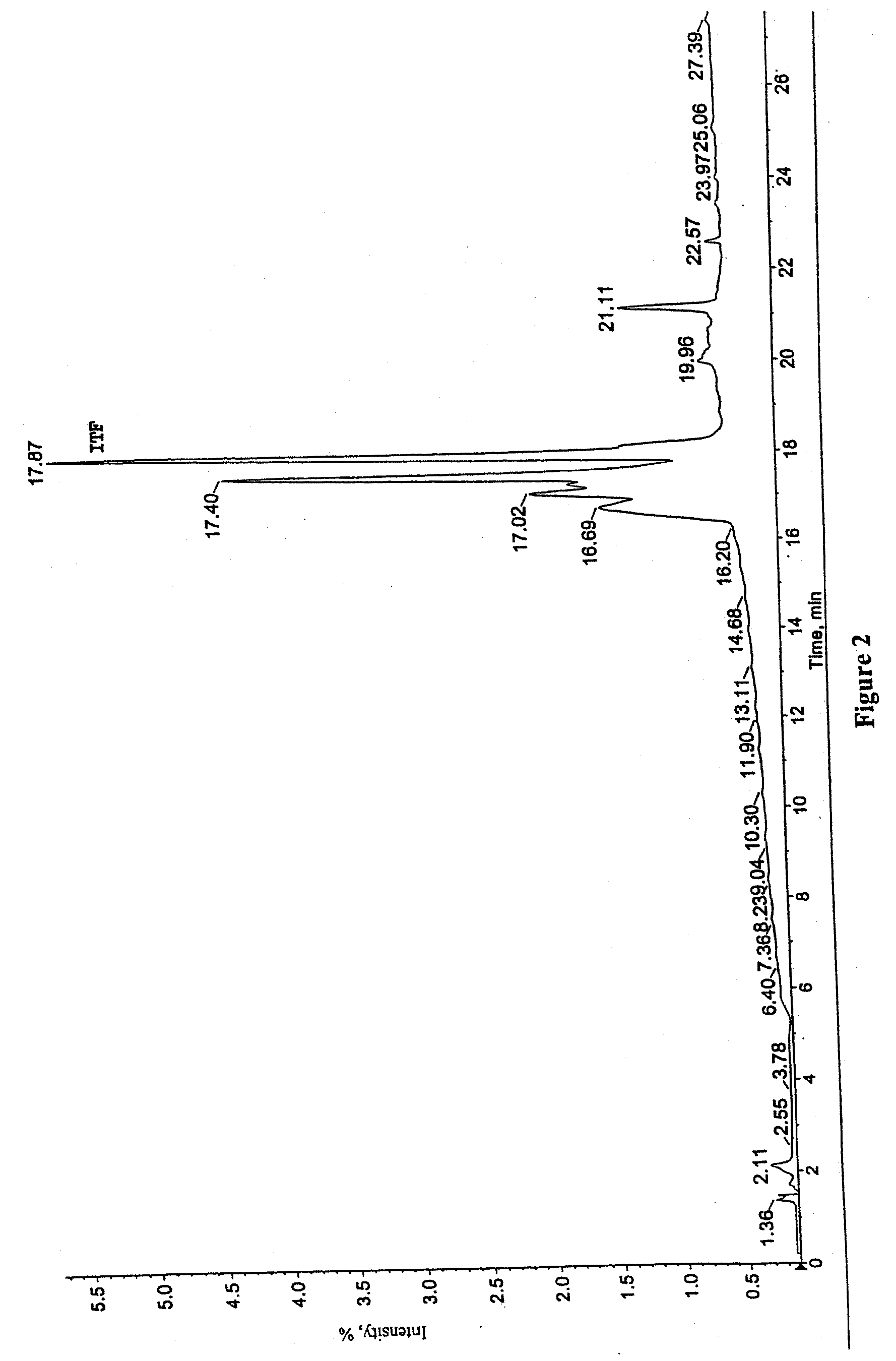Methods of treating epithelial lesions
a technology of epithelial cells and treatment methods, applied in the direction of cardiovascular disorders, drug compositions, aerosol delivery, etc., can solve the problems of reducing the barrier and absorption function of the tissue, causing deleterious consequences, etc., to improve the serum half-life of tdcp, facilitate dimer formation, and alter the pharmacokinetic or pharmacodynamic profile
- Summary
- Abstract
- Description
- Claims
- Application Information
AI Technical Summary
Benefits of technology
Problems solved by technology
Method used
Image
Examples
example 1
Recombinant hITF Fragment Production Using Yeast
[0153] Frozen cultures of Pichia pastoris (CCM280), encoding a stably integrated recombinant hITF fragment (hITF15-73), fused to an α-factor secretory signal and regulated by the AOX-1 methanol-responsive promoter, were streaked onto YPD agar plates and grown for two days at 30° C. Individual colonies were used as an inoculum for growth into 10 mL of YPD liquid medium and further grown in a shaking 30° C. incubator. Preparation and growth are directed as follows.
[0154] Media Formulation and Growth of Recombinant Yeast
[0155] Preparation of 1 L of Basal salts / Trace salts including 16 g / L glycerol (w / v) was performed in a Fembach flask (Fisher Scientific) and inoculated with 10 mL of YPD culture. Basal salt solution (2 ml / L; with or without glycerol) was added before inoculating with the yeast. This mixture was incubated for 2 days with vigorous shaking at 30° C. After two days, the liquid culture was removed and centrifuged for 10 min...
example 2
Analysis of Recombinant hITF in Fermentation Broth Sample Preparation
[0162] Recombinant hITF15-73, purified to homogeneity and prepared in 0.1% aqueous trifluoroacetic acid (TFA), was used as a standard for mass-spectrometry analysis.
[0163] Frozen fermentation broth samples produced in Example 1 were thawed, and 10 μL of 0.1% (v / v) aqueous TFA was added to 90 μL aliquots for analysis. The samples were vortexed and by centrifuged for 5 minutes at 9000 rpm (room temperature). The supernatants were removed and applied to a prewashed (300 μL acetonitrile / 0.1% TFA) and equilibrated (500 μL 0.1% TFA) C18 Trap cartridge (Michrom BioResources; Calif., Part No. 004 / 25109 / 02). The loaded Trap cartridges were washed with 1 mL 0.1% TFA and bound material was eluted with 100 μL of a 20% acetonitrile / 0.1% TFA solution. Samples were dried under N2 or by lyophilization, resuspended in 50-100 μL of 0.1% TFA, and centrifuged once more for 5 minutes at 9000 rpm. Liquid chromatography-mass spectrosco...
example 3
The Biologically Activity of TDCPs from Recombinant hITF15-73
[0186] Biological activity of recombinant trefoil peptide fragments was measured using an in vitro wound / migration assay as described by Dignass et al. (J. Clin. Invest. 94:376-383 (1994)). Briefly, primary intestinal epithelial, IEC-6 cells (at passage 17) were grown in sterile Dulbecco's Modified Eagle Medium (DMEM) supplemented with 5% FCS (v / v), 5 μg / μt insulin, and 10 mM penicillin / streptomycin / L-glutamine (PSG). Cells were grown to confluence in a humidified chamber at 37° C. and 5% CO2.
[0187] Prior to performing biopotency assays, the media was removed, washed 2× with 0.1% FCS / DMEM and serum-starved overnight in 0.1% FCS / DMEM at 37° C. and 5% CO2. Two simulated wounds per well were made by scoring the cells with a razor blade. The cells were then washed once with 0.1% FCS / DMEM. Samples of hITF15-73 and its fragments and isoforms were produced in Pichia pastoris and purified as described above. The TDCP mixture was...
PUM
| Property | Measurement | Unit |
|---|---|---|
| pH | aaaaa | aaaaa |
| pH | aaaaa | aaaaa |
| volumes | aaaaa | aaaaa |
Abstract
Description
Claims
Application Information
 Login to View More
Login to View More - R&D
- Intellectual Property
- Life Sciences
- Materials
- Tech Scout
- Unparalleled Data Quality
- Higher Quality Content
- 60% Fewer Hallucinations
Browse by: Latest US Patents, China's latest patents, Technical Efficacy Thesaurus, Application Domain, Technology Topic, Popular Technical Reports.
© 2025 PatSnap. All rights reserved.Legal|Privacy policy|Modern Slavery Act Transparency Statement|Sitemap|About US| Contact US: help@patsnap.com



